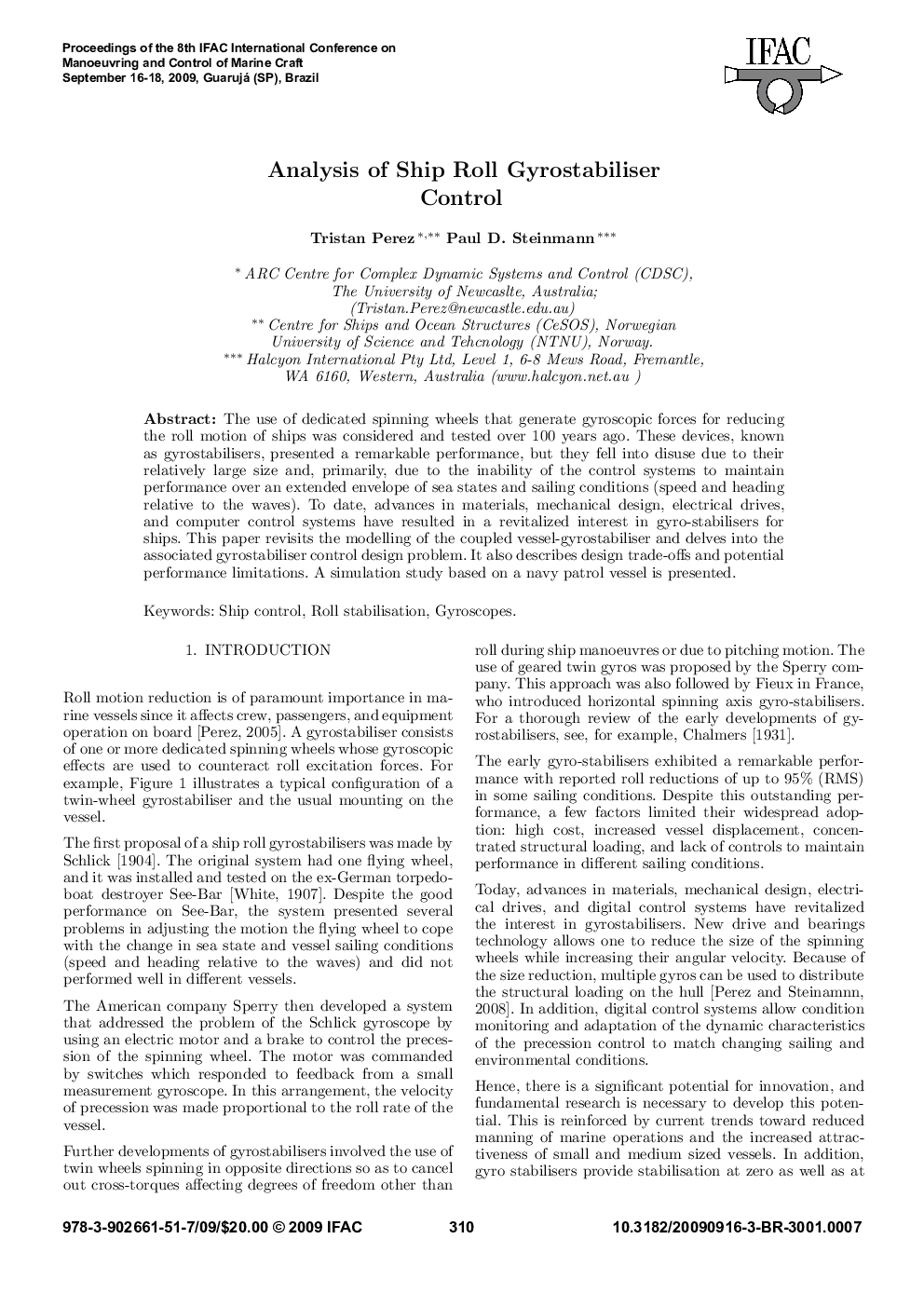| کد مقاله | کد نشریه | سال انتشار | مقاله انگلیسی | نسخه تمام متن |
|---|---|---|---|---|
| 710535 | 892111 | 2009 | 6 صفحه PDF | دانلود رایگان |

The use of dedicated spinning wheels that generate gyroscopic forces for reducing the roll motion of ships was considered and tested over 100 years ago. These devices, known as gyrostabilisers, presented a remarkable performance, but they fell into disuse due to their relatively large size and, primarily, due to the inability of the control systems to maintain performance over an extended envelope of sea states and sailing conditions (speed and heading relative to the waves). To date, advances in materials, mechanical design, electrical drives, and computer control systems have resulted in a revitalized interest in gyro-stabilisers for ships. This paper revisits the modelling of the coupled vessel-gyrostabiliser and delves into the associated gyrostabiliser control design problem. It also describes design trade-offs and potential performance limitations. A simulation study based on a navy patrol vessel is presented.
Journal: IFAC Proceedings Volumes - Volume 42, Issue 18, 2009, Pages 310-315